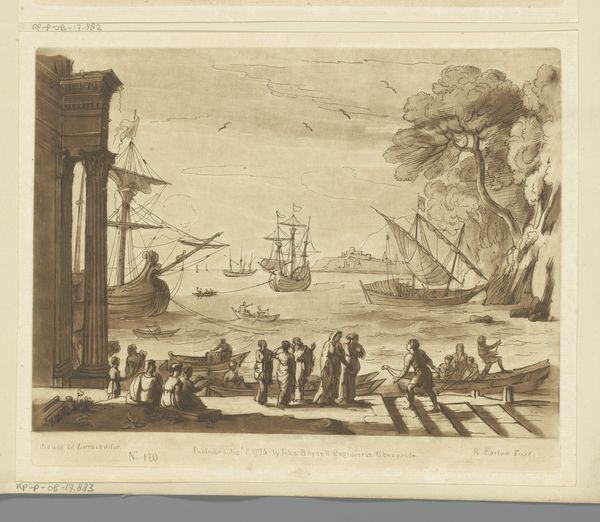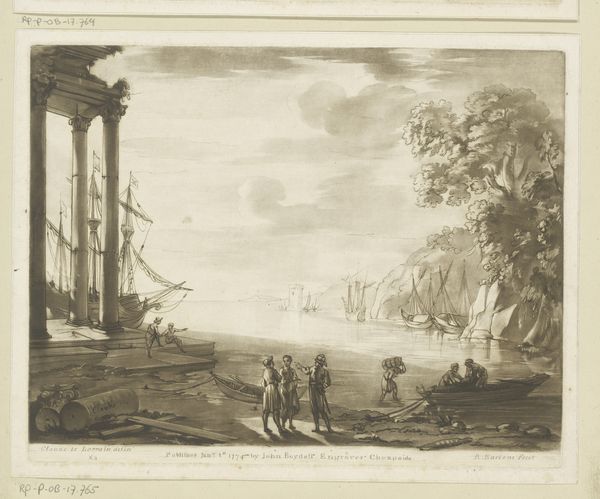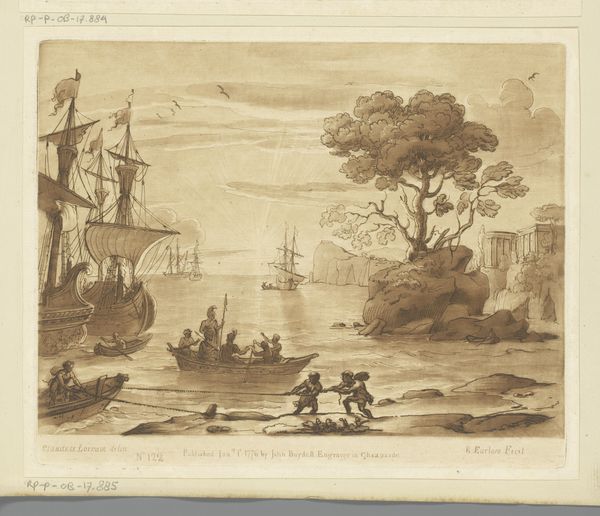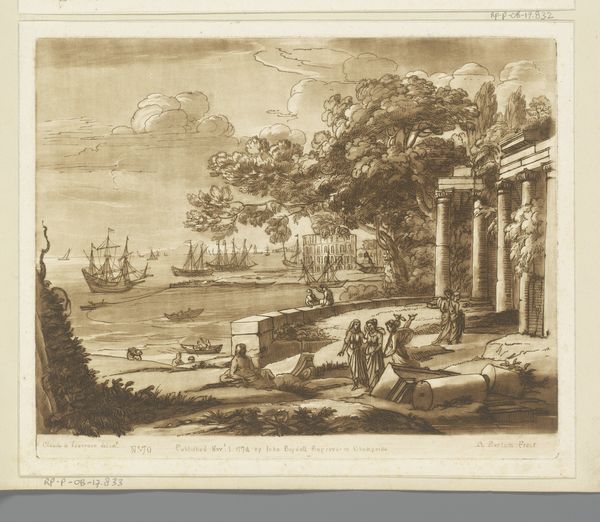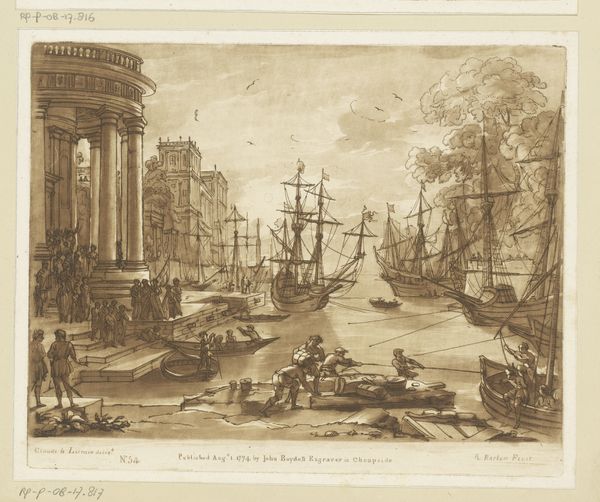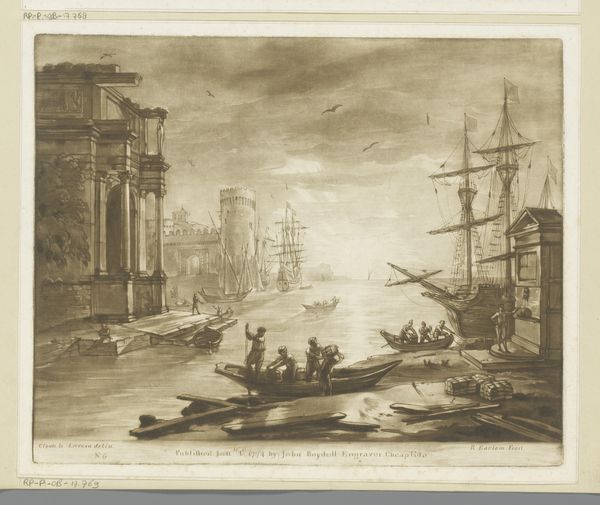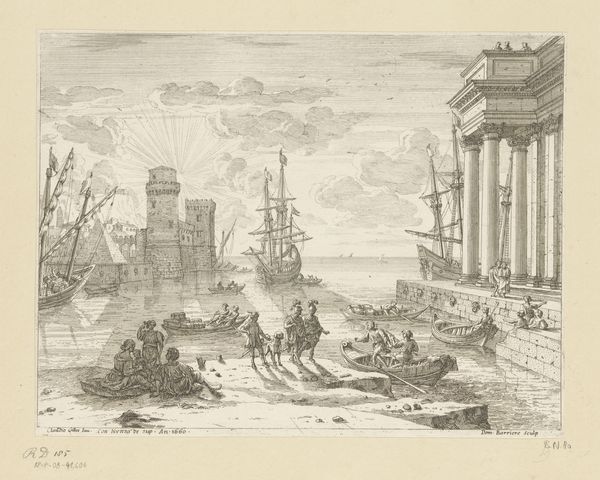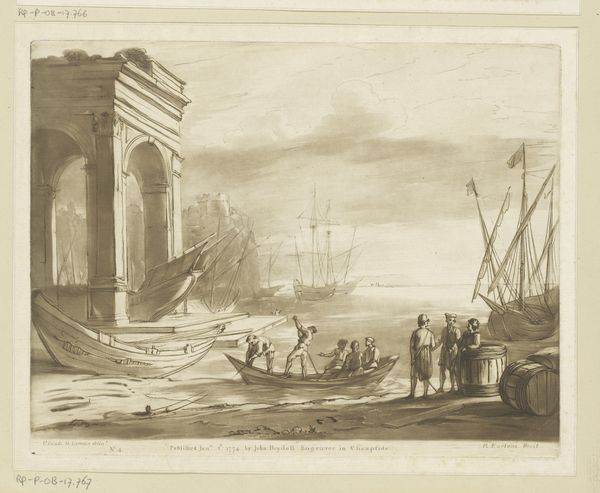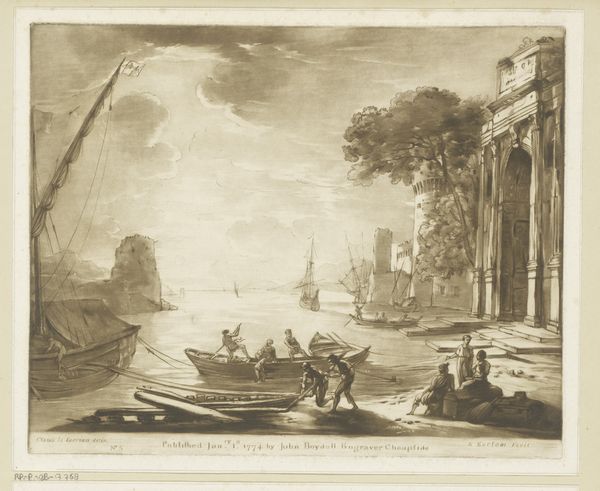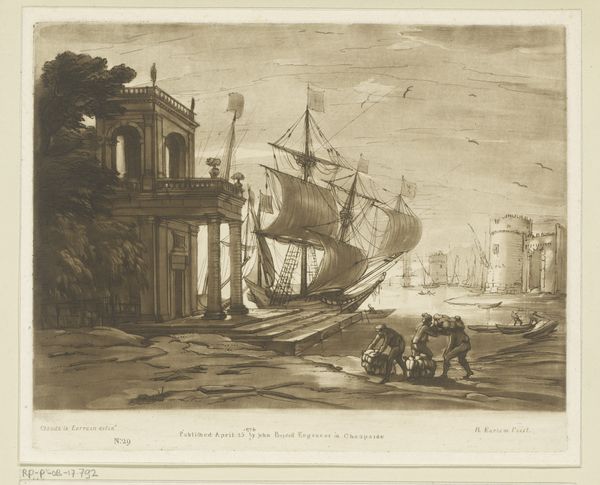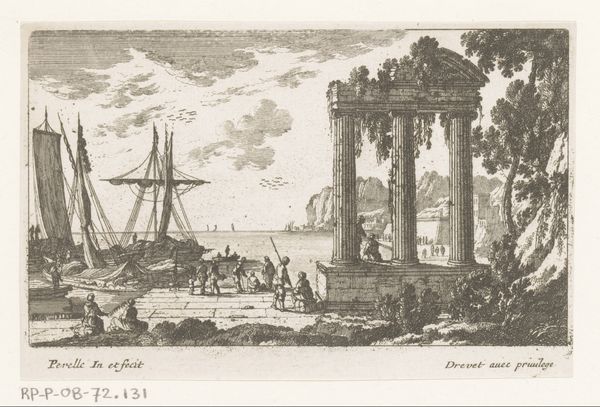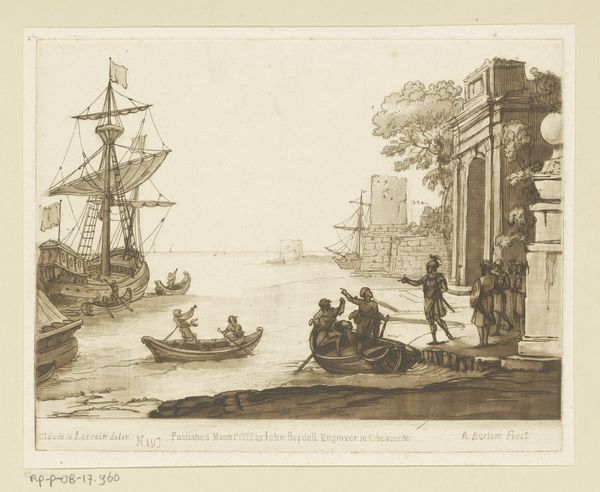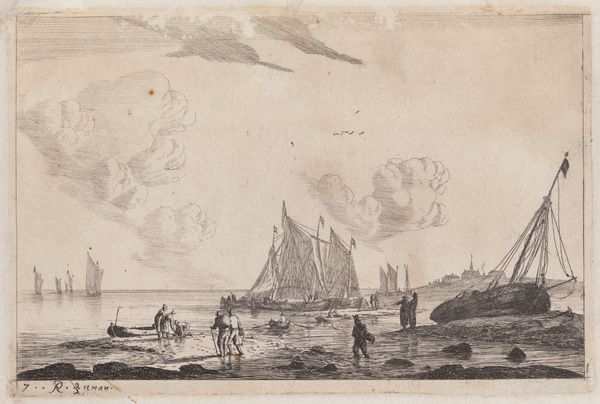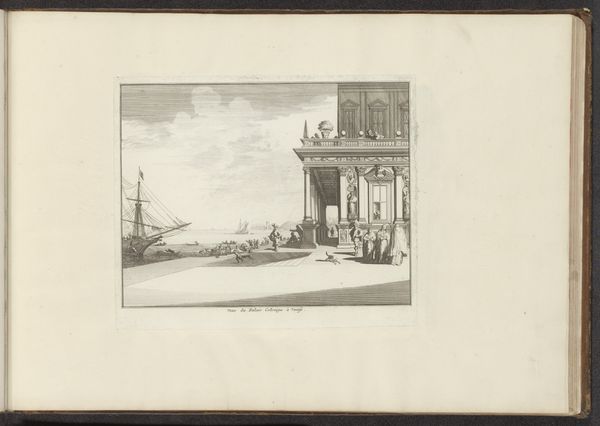
Dimensions: height 206 mm, width 257 mm
Copyright: Rijks Museum: Open Domain
Curator: Let's discuss "Seaport with the Embarkation of St. Paul," an etching likely created in 1776 by Richard Earlom, now residing here at the Rijksmuseum. It evokes such a sense of classical maritime grandeur, doesn't it? Editor: It absolutely does! It hits you immediately – the soft, sepia tones almost make it feel like a half-remembered dream of the ancient world. Like stumbling upon an old map tucked away in your grandfather's attic, whispering tales of adventure and faraway lands. Curator: That's a lovely interpretation! From a critical perspective, we should consider how Earlom, though a skilled engraver, was recreating Claude Lorrain’s original painting, an idealised depiction that glosses over the realities of 18th century maritime trade and colonial expansion. How does Earlom’s interpretation support or subvert Claude’s original vision? Editor: Well, seeing this through a contemporary lens, the whole embarkation theme feels rather bittersweet. There's an undeniable romanticism at play – ships poised to cross the horizon and an almost serene departure. Yet, that romance can't fully obscure the legacies tied to those ships. I suppose, depending on our perspective, one might recognize those same departures also symbolize upheaval, relocation, even displacement and even religious zealousness. Curator: Precisely. And focusing on the figures themselves, what can we infer from the composition's presentation of those individuals grouped in proximity to Saint Paul, as well as the many others in his peripheral field? Earlom subtly weaves social hierarchies into the fabric of the scene. Editor: Absolutely, and despite the classical themes, I am curious how viewers might see that contrast in values. As a matter of style, too, there's an incredibly skilled execution. I love how Earlom's linework gives depth without overwhelming. It has a kind of delicate strength to it. And how even this muted monochrome conveys this vastness of the open water, as a border for commerce, conquest and sometimes connection. Curator: Indeed. Ultimately, this work invites a layered discussion, both aesthetic and ethical. Editor: A visual poem inviting both contemplation and critique. Food for thought and feels.
Comments
No comments
Be the first to comment and join the conversation on the ultimate creative platform.
